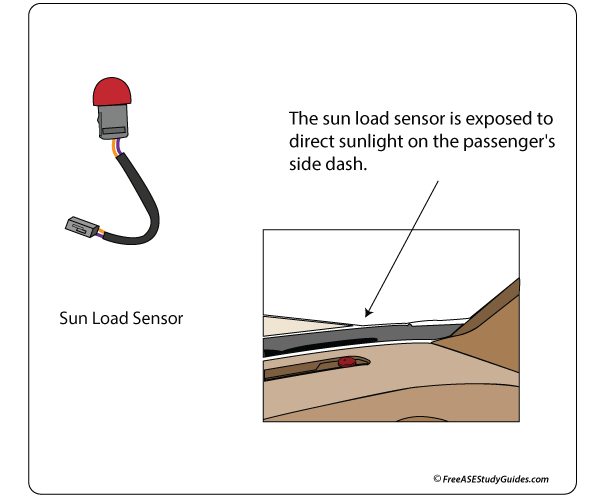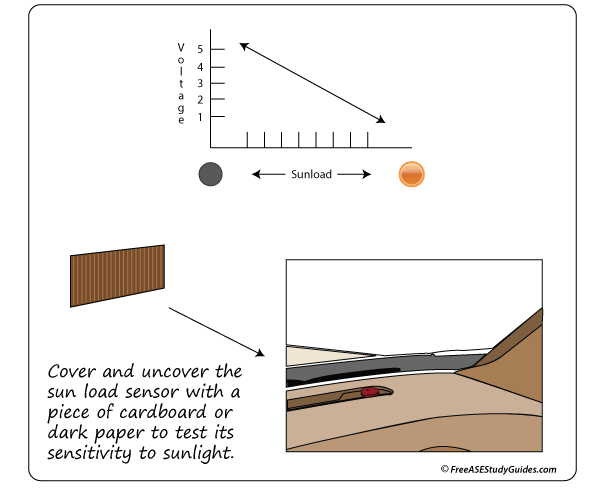Sun Load Sensor

The (EATC) electronic automatic temperature control system uses the sun load and in-cabin temperature sensor inputs to adjust blower speed and improve passenger comfort. The sun load sensor contains a photodiode that's sensitive to sunlight. Resistance in the sensor increases as the sun load increases. Suppose the sensor is covered with a dash cover or a window sticker. In that case, the control module receives inaccurate information and makes incorrect adjustments.

EATC systems allow operators to set the desired temperature, and the system maintains that level of comfort. If the sun load sensor fails, a fault code is set. The program enters a default value and tries to achieve the desired temperature setting.

Sun Load Sensor Test: It's on the dash, usually close to the headlight sensor. As sunlight increases, the sensor's signal voltage decreases. View voltage readings in a capable scan tool datastream. Park the vehicle in bright sunlight. With ignition on KOEO, check voltage readings against specifications. The voltage reading on the display should be low.
Start the engine and run the air conditioning on MAX for a few minutes until the passenger compartment cools down. While monitoring the sensor's voltage, cover the sensor with something dark for a minute or so. Enough to affect the photodiode, causing the voltage to increase. The sensor should change its resistance, modifying the control module's 5V signal.